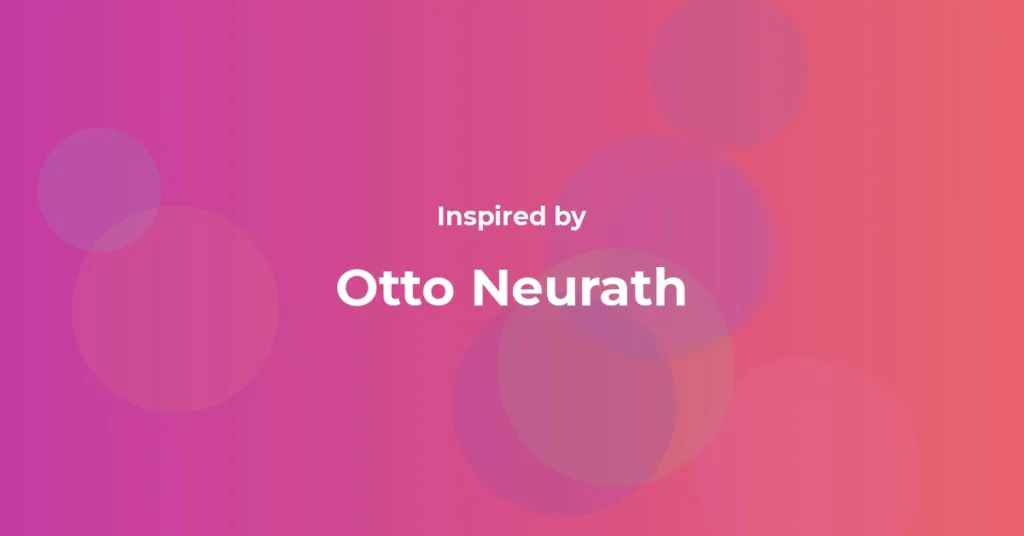
Otto Neurath Famous Quotes and Affirmations
Otto Neurath (1882–1945) was a pioneering Austrian philosopher, sociologist, and economist whose contributions to logical positivism, visual communication, and social planning have left an indelible mark on intellectual history. A key figure in the Vienna Circle, Neurath championed the unity of science and the use of empirical methods to address societal issues. His development of the ISOTYPE system revolutionized data visualization, making complex information accessible to the masses. Beyond academia, Neurath was deeply committed to social reform, envisioning a world where scientific thinking could improve living conditions. This article explores his profound ideas, verified quotes, and lasting achievements, while offering affirmations inspired by his vision of clarity, collaboration, and progress. Through his interdisciplinary approach, Neurath sought to bridge the gap between science and everyday life, leaving a legacy that continues to inspire thinkers and reformers alike.
Otto Neurath Best Quotes
Below are verified quotes from Otto Neurath, sourced from his original works and authoritative publications, with precise citations to ensure accuracy and historical fidelity.
- “We are like sailors who must rebuild their ship on the open sea, never able to dismantle it in dry-dock and to reconstruct it there out of the best materials.” – Otto Neurath, Anti-Spengler (1921), p. 199
- “The scientific world-conception knows no unsolvable riddle. Clarification of the traditional philosophical problems leads us partly to unmask them as pseudo-problems, and partly to transform them into empirical problems and thereby subject them to the judgment of experimental science.” – Otto Neurath, The Scientific Conception of the World: The Vienna Circle (1929), p. 11
- “A picture language can be of great help in making things clear to everyone, especially to people with little schooling.” – Otto Neurath, International Picture Language (1936), p. 18
We recommend the following books for self improvement:

365 (+1) Affirmations to Supercharge Your Life
The one-of-a-kind program contained in this affirmation book, adorned with beautiful and colorful artworks, is meticulously designed to be wholeheartedly embraced by your subconscious mind, enabling you to manifest the life you desire.
Buy on Amazon
Small Habits Revolution: 10 Steps To Transforming Your Life Through The Power Of Mini Habits
If you're frustrated by failed attempts to adopt new habits, there's good news. The solution is within your grasp. This fast-moving guide provides actionable advice that will help you to make positive, purposeful, lasting changes in your life.
Buy on Amazon
Embrace What You Can’t Change
"Embrace What You Can’t Change" by the insightful duo Ahiranta Rinpoche and Ozay Rinpoche is a transformative guide that invites readers to navigate the complexities of life with grace and acceptance.
Buy on Amazon
We Can Do Better: A Self-Help Book for People Who Are Tired of Self-Help Books
We Can Do Better isn’t another book telling you to hustle harder or wake up at 5 a.m. It’s not about fixing yourself — it’s about finally giving yourself permission to stop performing and start feeling human again.
Buy on Amazon
The P.R.I.M.E.R. Goal Setting Method
Amazon bestselling author Damon Zahariades provides a clear, concise, and actionable system for accomplishing anything you set out to do. You'll learn how to approach goal setting in a way that practically guarantees success. Along the way, you'll experience a massive boost in self-confidence. After achieving goal after goal, you'll begin to anticipate success as a foregone conclusion.
Buy on AmazonThis post contains affiliate links. As an Amazon Associate, we earn from qualifying purchases at no additional cost to you.
Famous Otto Neurath Aphorisms
Otto Neurath was known for concise, impactful statements that encapsulated his philosophical and practical outlook. Below are verified aphorisms attributed to him, with exact citations.
- “Words divide, pictures unite.” – Otto Neurath, International Picture Language (1936), p. 24
- “To remember simplified pictures is better than to forget accurate figures.” – Otto Neurath, Modern Man in the Making (1939), p. 75
Affirmations Inspired by Otto Neurath
While not direct quotes, the following 50 affirmations are inspired by Otto Neurath’s ideas of clarity, scientific unity, social progress, and visual communication. They reflect his commitment to rational thought and societal improvement.
- I strive to make complex ideas clear and accessible to all.
- I believe in the power of science to solve human problems.
- I rebuild my understanding daily, even amidst uncertainty.
- I value unity over division in thought and action.
- I communicate with simplicity to inspire understanding.
- I embrace empirical evidence as my guide.
- I work toward a world where knowledge serves everyone.
- I see beauty in structured, logical thinking.
- I aim to bridge gaps between disciplines for greater good.
- I use visuals to make information inclusive.
- I reject unsolvable mysteries in favor of practical solutions.
- I contribute to a collective understanding of the world.
- I seek clarity in every word and image I share.
- I am committed to social reform through rational means.
- I value collaboration over isolated effort.
- I trust in the progress of unified science.
- I simplify without losing the essence of truth.
- I inspire others with ideas grounded in reality.
- I build systems that empower the many, not the few.
- I challenge pseudo-problems with critical thought.
- I see every problem as an opportunity for inquiry.
- I advocate for education that reaches all people.
- I design with the goal of universal comprehension.
- I stand for a society informed by science.
- I transform confusion into structured insight.
- I pursue knowledge that benefits humanity.
- I create tools for understanding across cultures.
- I believe in the strength of collective reasoning.
- I turn data into stories that everyone can grasp.
- I reject dogma in favor of testable ideas.
- I work to make the abstract tangible.
- I value progress over perfection in my endeavors.
- I seek to unify diverse perspectives through logic.
- I champion clarity as a path to equality.
- I build on the past while navigating the present.
- I trust in the power of shared knowledge.
- I aim to solve real-world issues with evidence.
- I communicate to unite rather than divide.
- I see every challenge as a call for innovation.
- I strive for a world where science shapes policy.
- I create symbols that transcend language barriers.
- I believe in the potential of every mind to learn.
- I approach life with a scientific spirit.
- I value the practical over the speculative.
- I work to make knowledge a public good.
- I design for impact, not for decoration.
- I see connections where others see chaos.
- I commit to lifelong learning and adaptation.
- I believe in building a better future through reason.
- I inspire others to think critically and act wisely.
- I dedicate myself to clarity, progress, and unity.
Main Ideas and Achievements of Otto Neurath
Otto Neurath was a multifaceted intellectual whose work spanned philosophy, sociology, economics, and visual communication. Born in Vienna in 1882, he emerged as a central figure in the early 20th-century intellectual landscape, particularly through his association with the Vienna Circle, a group of philosophers and scientists dedicated to logical positivism. Neurath’s primary philosophical contribution was his advocacy for the “unity of science,” a concept that proposed all scientific disciplines could be integrated into a cohesive framework based on empirical observation and logical analysis. He believed that science should not be fragmented into isolated fields but should work collaboratively to address both theoretical and practical problems. This vision was articulated in his involvement with the “International Encyclopedia of Unified Science,” a project he co-initiated to compile scientific knowledge into a unified system.
Neurath’s philosophical stance was rooted in his rejection of metaphysics, which he viewed as speculative and untestable. He argued that many traditional philosophical questions were “pseudo-problems” that could either be dismissed or reframed as empirical inquiries. This perspective aligned with the Vienna Circle’s broader mission to ground philosophy in the methods of natural science. Neurath’s metaphor of rebuilding a ship at sea, often cited as a critique of foundationalist epistemology, illustrated his belief that knowledge must be continuously revised and reconstructed without the luxury of starting from an unassailable base. This pragmatic approach underscored his commitment to adaptability and progress in intellectual endeavors.
Beyond philosophy, Neurath was deeply engaged in social and economic planning, influenced by his early studies in political economy and his experiences during and after World War I. During the short-lived Bavarian Soviet Republic in 1919, he served as head of the Central Planning Office, where he attempted to implement a socialist economy based on central planning and socialization of key industries. Though the experiment was brief and ultimately unsuccessful due to political upheaval, it reflected Neurath’s lifelong dedication to applying scientific principles to societal organization. He envisioned a “socialization” model that prioritized collective welfare over individual profit, advocating for a planned economy informed by empirical data rather than ideological dogma.
One of Neurath’s most enduring achievements was the development of the ISOTYPE (International System of Typographic Picture Education), a method of visual communication designed to convey complex information through standardized pictorial symbols. Developed in the 1920s and 1930s, ISOTYPE aimed to make statistical and social data accessible to a broad audience, including those with limited literacy. Neurath believed that visual language could transcend cultural and linguistic barriers, fostering global understanding. Working with collaborators like Marie Reidemeister (later Neurath) and Gerd Arntz, he applied ISOTYPE to educational materials, museum exhibits, and public information campaigns. His work in this area was pioneering, laying the groundwork for modern infographics and data visualization techniques used today in media, education, and policy communication.
Neurath’s commitment to public education and social reform was evident in his role as director of the Social and Economic Museum in Vienna during the 1920s. Under his leadership, the museum became a hub for public enlightenment, using ISOTYPE charts and exhibits to educate citizens about economic conditions, health statistics, and social issues. He saw this as a democratic tool, empowering people with knowledge to participate in societal decision-making. His belief in the democratization of information was radical for its time, challenging elitist notions of who should have access to complex data.
Politically, Neurath was a staunch advocate for socialism, though his approach was pragmatic rather than ideological. He distanced himself from Marxist orthodoxy, favoring a scientific socialism that relied on empirical analysis and planning over revolutionary rhetoric. His experiences in post-war Austria and Germany shaped his views on the need for structured economic systems to prevent the chaos and inequality he witnessed. Even after fleeing Austria due to the rise of fascism in the 1930s, first to the Netherlands and then to England, Neurath continued to promote his ideas through writing and collaboration with other exiled intellectuals.
Neurath’s interdisciplinary approach also extended to his contributions to the philosophy of language. He introduced the concept of “protocol statements,” basic observational reports that serve as the foundation for scientific knowledge. These statements, he argued, must be intersubjectively verifiable, meaning they can be confirmed by multiple observers. This idea was central to his vision of a scientific community built on shared, testable observations rather than individual speculation. His work on protocol statements influenced debates within the Vienna Circle, particularly in discussions with Rudolf Carnap and Karl Popper, though Neurath’s more pragmatic and social orientation often set him apart from his peers’ more formalist approaches.
Throughout his career, Neurath maintained a focus on the practical application of ideas. He was not content with abstract theorizing; instead, he sought to use philosophy and science as tools for improving human life. His writings, such as “Empirical Sociology” (1931) and “Modern Man in the Making” (1939), reflect this dual commitment to intellectual rigor and social utility. In “Modern Man in the Making,” he used ISOTYPE visuals to narrate the history of human progress, demonstrating how economic and social conditions shape civilizations. This work exemplified his belief that understanding the past through data could inform better planning for the future.
Neurath’s later years, spent in exile in England after escaping Nazi persecution, were marked by continued productivity despite personal and professional challenges. He co-founded the Isotype Institute in Oxford, continuing his work on visual education and contributing to British wartime information campaigns. His resilience in the face of displacement underscored his unwavering commitment to his principles. Neurath’s death in 1945 marked the end of a life dedicated to the intersection of science, society, and communication, but his ideas have since influenced fields as diverse as philosophy of science, graphic design, and public policy.
In summary, Otto Neurath’s main ideas and achievements revolve around the unity of science, the rejection of metaphysics, the application of empirical methods to social planning, and the democratization of knowledge through visual communication. His work with the Vienna Circle solidified logical positivism as a major philosophical movement, while his ISOTYPE system transformed how information is conveyed. As a social reformer, he sought to build a world where scientific reasoning could address inequality and improve living conditions. His legacy is one of interdisciplinary innovation, grounded in a profound belief in the potential of human collaboration and rational thought to create a better future.
Magnum Opus of Otto Neurath
While Otto Neurath produced numerous influential works across philosophy, sociology, and visual communication, his magnum opus can be considered the broader project of the “International Encyclopedia of Unified Science,” combined with his development of the ISOTYPE system. These endeavors, though distinct, encapsulate his lifelong mission to unify scientific knowledge and make it accessible to all. However, since the Encyclopedia was a collaborative effort and never fully completed, and ISOTYPE is a practical system rather than a singular text, a specific focus on his book “Modern Man in the Making” (1939) offers a tangible representation of his culminating ideas. This work integrates his philosophical principles, social vision, and innovative visual methods into a cohesive narrative, making it a standout in his oeuvre.
“Modern Man in the Making” is a richly illustrated text that uses ISOTYPE visuals to chart the development of human society through economic, demographic, and cultural lenses. Published in 1939, shortly before Neurath’s exile to England, it represents the apex of his efforts to combine data visualization with historical analysis. The book was intended for a general audience, reflecting Neurath’s democratic ethos of making knowledge accessible beyond academic circles. Through a series of charts, diagrams, and concise text, Neurath traces the evolution of human communities from ancient times to the modern era, highlighting how factors like population growth, technological advancements, and economic systems shape societal structures. Each visual in the book adheres to the ISOTYPE principles of clarity and standardization, ensuring that even readers with minimal education could grasp complex trends.
The significance of “Modern Man in the Making” lies in its dual role as both an educational tool and a philosophical statement. Neurath uses the book to argue that understanding historical patterns through empirical data is essential for planning a better future. This aligns with his broader concept of “social engineering,” where scientific methods are applied to societal organization. The text avoids speculative theorizing, instead grounding its narrative in verifiable statistics and observable trends. For instance, Neurath illustrates shifts in labor distribution across centuries, showing how industrialization altered social hierarchies, with accompanying ISOTYPE symbols depicting workers, machines, and urban growth. This approach not only educates but also empowers readers to think critically about their own societal context.
Visually, the book is a testament to Neurath’s collaboration with artists and designers, particularly Gerd Arntz, whose stark, minimalist icons became synonymous with ISOTYPE. Each page is carefully composed to balance text and image, ensuring that neither overwhelms the other. Neurath’s insistence on repetition in visual symbols—where quantities are shown by repeating icons rather than scaling them—prevents misinterpretation and reinforces clarity. This method, detailed in the book, was revolutionary for its time, prefiguring modern data visualization practices in journalism and education. “Modern Man in the Making” thus serves as both a practical demonstration of ISOTYPE and a manifesto for its universal application.
Philosophically, the book embodies Neurath’s commitment to the unity of science. By integrating insights from history, economics, sociology, and demography into a single narrative, he demonstrates how disparate fields can converge to produce a holistic understanding of human progress. This interdisciplinary approach mirrors the goals of the “International Encyclopedia of Unified Science,” a project Neurath co-edited with Rudolf Carnap and Charles Morris. Although the Encyclopedia itself, launched in the late 1930s, remained incomplete due to wartime disruptions and Neurath’s death in 1945, its ambition to synthesize scientific knowledge is echoed in the structure and content of “Modern Man in the Making.” The book can be seen as a microcosm of that larger vision, applying the Encyclopedia’s principles to a specific historical analysis.
Moreover, “Modern Man in the Making” reflects Neurath’s social ideals. Written during a period of global upheaval, with the rise of fascism and the looming threat of World War II, the book subtly advocates for rational planning and international cooperation as antidotes to chaos and conflict. Neurath’s visuals often emphasize disparities in wealth and living conditions across regions, implicitly calling for policies that address inequality. His focus on urbanization, health, and education as metrics of progress underscores his belief in science as a tool for social reform. This alignment of content with purpose makes the work not just a historical survey but a call to action, urging readers to use data-driven insights for societal improvement.
The production of the book itself was a feat of collaboration, reflecting Neurath’s belief in collective effort over individual authorship. Working with his team at the Isotype Institute, he ensured that every element—from research to design—was meticulously crafted to serve the book’s educational mission. This collaborative spirit is evident in the acknowledgments and the seamless integration of text and image, which required input from statisticians, historians, and graphic artists. Neurath’s role as orchestrator of this process highlights his broader approach to intellectual work, where the synthesis of diverse expertise mirrors the unity of science he championed.
In the context of Neurath’s career, “Modern Man in the Making” stands out for its accessibility and impact. Unlike his earlier philosophical writings, which were often dense and aimed at academic audiences, this book was designed for the public, embodying his later focus on communication as a form of social activism. Its publication in English also marked an effort to reach an international audience, particularly significant given Neurath’s exile from German-speaking regions due to Nazi persecution. The book’s enduring relevance is evident in its influence on fields like graphic design and public history, where ISOTYPE-inspired visuals remain a staple of information communication.
In conclusion, while Neurath’s magnum opus could be debated across his various projects, “Modern Man in the Making” encapsulates the essence of his intellectual legacy. It merges his philosophical commitment to empirical science, his practical innovation in visual communication, and his social vision for a rationally planned world. The book is not merely a historical text but a blueprint for how knowledge can be democratized and applied to human betterment. Through its pages, Neurath’s ideals of clarity, unity, and progress shine as brightly as the ISOTYPE symbols that illustrate them, cementing his place as a thinker whose work transcends time and discipline.
Interesting Facts About Otto Neurath
Otto Neurath’s life and work are filled with fascinating details that illuminate his character, intellect, and impact. Below are several noteworthy facts about this remarkable thinker, spanning his personal journey, professional milestones, and enduring influence.
1. Early Intellectual Curiosity: Born on December 10, 1882, in Vienna, Neurath displayed an insatiable curiosity from a young age. His father, Wilhelm Neurath, was a professor of political economy, and young Otto grew up surrounded by books and intellectual discussions. He studied a wide range of subjects, including mathematics, physics, history, and philosophy, at the University of Vienna and later in Berlin, showcasing the interdisciplinary bent that would define his career.
2. Role in the Bavarian Soviet Republic: In 1919, Neurath took on a significant political role as the head of the Central Planning Office during the short-lived Bavarian Soviet Republic in Munich. Tasked with socializing the economy, he attempted to implement a system of central planning without money, based on in-kind calculations. Though the republic collapsed after a few months, this experience shaped his views on economic planning and scientific socialism.
3. Founder of Logical Positivism: As a core member of the Vienna Circle in the 1920s and 1930s, Neurath played a pivotal role in developing logical positivism, a philosophical movement that emphasized empirical verification and rejected metaphysics. His pragmatic approach often contrasted with the more formalist perspectives of colleagues like Rudolf Carnap, leading to lively debates within the group.
4. Inventor of ISOTYPE: Neurath’s creation of the ISOTYPE system in the 1920s revolutionized visual communication. Initially developed for the Social and Economic Museum in Vienna, ISOTYPE used standardized pictograms to represent statistical data, making information accessible to people regardless of language or education level. The system’s name, an acronym for International System of Typographic Picture Education, reflects Neurath’s global vision.
5. Exile and Resilience: With the rise of the Nazi regime, Neurath, who was of Jewish descent and a known socialist, fled Austria in 1934. He first settled in the Netherlands, where he continued his work on ISOTYPE, and later escaped to England in 1940 after the German invasion. Despite personal hardship, including internment as an “enemy alien” in Britain, he remained productive, co-founding the Isotype Institute in Oxford.
6. Collaboration with Artists: Neurath’s visual projects owed much to his partnerships with talented designers, notably Gerd Arntz, a German artist whose minimalist style defined ISOTYPE imagery. Together with Marie Reidemeister, who later became his wife, Neurath refined a visual language that prioritized clarity and universality, demonstrating his belief in teamwork as essential to innovation.
7. Advocate for Public Education: As director of the Social and Economic Museum in Vienna from 1925 to 1934, Neurath transformed the institution into a center for public education. Using ISOTYPE charts, the museum presented exhibits on housing, health, and labor conditions, empowering ordinary citizens with knowledge about their world and influencing modern museum practices.
8. Influence on Modern Infographics: Neurath’s ISOTYPE system is widely regarded as a precursor to contemporary infographics. His insistence on visual simplicity and repeatability—showing quantities by repeating symbols rather than scaling them—remains a fundamental principle in data visualization, evident in everything from news graphics to digital dashboards.
9. Philosophical Metaphor of the Ship: Neurath’s famous metaphor of rebuilding a ship at sea, introduced in his critique of Oswald Spengler’s cultural pessimism, has become a cornerstone of anti-foundationalist philosophy. It illustrates his view that knowledge must be continuously revised without relying on an absolute starting point, influencing later thinkers in epistemology and philosophy of science.
10. Legacy in Multiple Fields: Neurath’s impact spans diverse disciplines, from philosophy and sociology to graphic design and urban planning. His ideas on the unity of science inspired interdisciplinary research, while his visual methods have shaped how information is communicated in education and public policy. His death on December 22, 1945, in Oxford, marked the end of a life that continues to resonate across academic and practical domains.
These facts highlight Otto Neurath as a visionary whose personal struggles, intellectual boldness, and collaborative spirit produced a legacy of innovation. His ability to connect abstract philosophy with tangible social impact remains a source of inspiration, underscoring the breadth of his contributions to human thought and progress.
Daily Affirmations that Embody Otto Neurath Ideas
Below are 15 daily affirmations inspired by Otto Neurath’s principles of clarity, scientific unity, social progress, and effective communication. These affirmations encourage a mindset aligned with his vision of rational thought and societal improvement.
- Today, I will seek clarity in all my thoughts and communications.
- I commit to solving problems with evidence and reason.
- I will rebuild my understanding, adapting to new information.
- I strive to unite people through shared knowledge and understanding.
- I will communicate complex ideas in simple, accessible ways.
- I trust in the power of science to guide my decisions.
- I work toward a world where knowledge benefits everyone.
- I value collaboration as the key to progress.
- I reject untestable assumptions in favor of observable facts.
- I aim to make information a tool for equality and empowerment.
- I see every challenge as a chance to apply rational solutions.
- I will design my actions for impact and clarity.
- I believe in the strength of collective effort over individual gain.
- I dedicate today to learning and sharing for the common good.
- I embrace a scientific spirit in all aspects of my life.
Final Word on Otto Neurath
Otto Neurath remains a towering figure in the history of philosophy, social science, and visual communication. His relentless pursuit of the unity of science, rejection of metaphysical speculation, and innovative ISOTYPE system demonstrate a rare blend of intellectual rigor and practical application. Neurath’s vision of a world guided by empirical reasoning and accessible knowledge continues to resonate, offering timeless lessons for addressing contemporary challenges. His life, marked by resilience in the face of political persecution and exile, exemplifies a commitment to progress over adversity. Through works like “Modern Man in the Making” and his leadership in the Vienna Circle, he bridged the gap between abstract thought and societal impact. Neurath’s legacy inspires us to think critically, communicate clearly, and collaborate for the common good, ensuring that science and reason remain tools for human betterment. His ideas endure as a beacon for those who believe in the power of knowledge to transform lives.








